Jedi, Jedi Knights, or collectively the Jedi Order are fictional characters, and often protagonists, featured in many works within the Star Wars franchise. Working symbiotically alongside the Old Galactic Republic, the Jedi Order is depicted as a religious, academic, meritocratic, and military (peacekeeping) organization whose origin dates back thousands of years before the events of the first film released in the franchise. The fictional organization has inspired a real-world new religious movement and parody religion: Jediism.
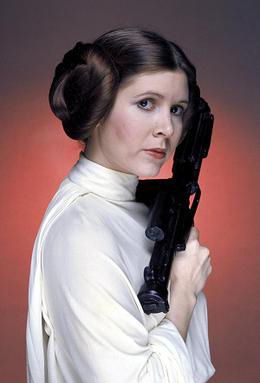
Princess Leia is a character in the Star Wars franchise. Introduced in the original Star Wars film in 1977, Leia is a princess of the planet Alderaan, a member of the Imperial Senate and a leader in the Rebel Alliance. With the help of Luke Skywalker and Han Solo, she brings about the destruction of the Death Star, a weapon of the Galactic Empire. In The Empire Strikes Back (1980), Leia commands a Rebel base and falls in love with Han, and in Return of the Jedi (1983), she discovers that Luke is her twin brother. In the sequel trilogy, Leia attempts to topple the First Order and bring her son, Ben Solo, back from the dark side of the Force.

Luke Skywalker is a fictional character and the protagonist of the original film trilogy of the Star Wars franchise created by George Lucas. Portrayed by Mark Hamill, Luke first appeared in Star Wars (1977), and he returned in The Empire Strikes Back (1980) and Return of the Jedi (1983). Over three decades later, Hamill returned as Luke in the Star Wars sequel trilogy, with a cameo in The Force Awakens (2015) before playing a major role in The Last Jedi (2017) and The Rise of Skywalker (2019). He later played a digitally de-aged version of the character in the Disney+ series The Mandalorian, appearing in the second-season finale, which premiered in 2020, and The Book of Boba Fett, in the sixth episode, released in 2022.
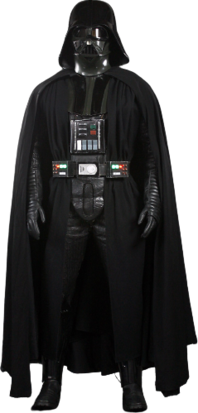
Darth Vader is a character in the Star Wars franchise. He is the primary antagonist of the original film trilogy and, as Anakin Skywalker, is the protagonist of the prequel trilogy. Born a slave, he later becomes a powerful Jedi. He is lured to the dark side of the Force by Chancellor Palpatine, and becomes the Sith Lord Darth Vader. After being severely wounded in a lightsaber battle, he is transformed into a cyborg. He is the husband of Padmé Amidala and the biological father of Luke Skywalker and Leia Organa Solo.

Star Wars: Episode III – Revenge of the Sith is a 2005 American epic space opera film that is the sequel to The Phantom Menace (1999) and Attack of the Clones (2002). It is the sixth film in the Star Wars film series, the third installment in the Star Wars prequel trilogy, and third chronological chapter of the "Skywalker Saga". It is written and directed by George Lucas, who also served as executive producer. The film stars Ewan McGregor, Natalie Portman, Hayden Christensen, Ian McDiarmid, Samuel L. Jackson, Christopher Lee, Anthony Daniels, Kenny Baker, and Frank Oz.
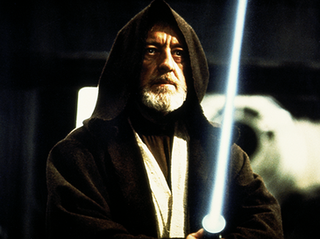
Obi-Wan Kenobi is a fictional character in the Star Wars franchise. Within the original trilogy, Obi-Wan is a Jedi Master as a supporting character and is portrayed by English actor Alec Guinness. In the later-released prequel trilogy, a younger version of the character serves as one of the two main protagonists, alongside Anakin Skywalker, and is portrayed by Scottish actor Ewan McGregor. In the original trilogy he is introduced as Ben Kenobi, an alias he uses while in hiding from the Empire. He is a mentor to Luke Skywalker, to whom he introduces the ways of the Jedi. After sacrificing himself in a duel against Darth Vader, Obi-Wan guides Luke through the Force in his fight against the Galactic Empire. In the prequel trilogy, set two decades earlier, he is initially a Padawan (apprentice) to Jedi Master Qui-Gon Jinn, and later mentor and friend of Luke's father Anakin, who falls to the dark side of the Force and becomes Vader. The character briefly appears in the sequel trilogy as a disembodied voice, speaking to protagonist Rey, and serving as the namesake of Ben Solo. He is frequently featured as a main character in various other Star Wars media, including the streaming television miniseries Obi-Wan Kenobi, in which McGregor reprised the role.
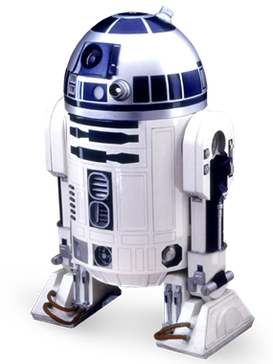
R2-D2 or Artoo-Detoo is a fictional robot character in the Star Wars franchise created by George Lucas. He has appeared in ten of the eleven theatrical Star Wars films to date, including every movie in the original trilogy, prequel trilogy, and sequel trilogy. At various points throughout the course of the films, R2, an astromech droid, is a friend to C-3PO, Padmé Amidala, Anakin Skywalker, Leia Organa, Luke Skywalker, and Obi-Wan Kenobi. R2-D2 and his companion C-3PO are the only characters to appear in every theatrical Star Wars film, with the exception of Solo: A Star Wars Story (2018).

The Skywalker family is a fictional legendary human family in the Star Wars franchise. Within the series' fictional universe, the Skywalkers are presented as a bloodline with strong inherent capabilities related to the Force and sometimes lightsaber skills. Luke Skywalker, his twin sister Princess Leia Organa, and their father Darth Vader are central characters in the original Star Wars film trilogy. Darth Vader, in his previous identity as Anakin Skywalker, is a lead character in the prequel film trilogy and so is his wife and the twins' mother Padmé Amidala; while his mother Shmi is a minor character in the first and second films respectively. Leia and Han Solo's son, Ben Solo, renamed himself Kylo Ren and is the main antagonist in the sequel film trilogy, while they and Luke serve as supporting characters. Shmi, Padmé, and Han are the only members who are not Force-sensitive. The Skywalker bloodline, alongside the Palpatine bloodline, are the two bloodlines that are the strongest with the Force.

The Clone Wars is a fictional conflict in the Star Wars franchise by George Lucas. Though mentioned briefly in the first Star Wars film, the war itself was not depicted until Attack of the Clones (2002) and Revenge of the Sith (2005). The Clone Wars are also the setting for three eponymous projects: a 2D animated series (2003–2005), a 3D film (2008), and a 3D animated series. They have featured in numerous Star Wars books and games.

Ralph Angus McQuarrie was an American conceptual designer who worked in film and television. His career included work on the original Star Wars trilogy, the original Battlestar Galactica television series, the film E.T. the Extra-Terrestrial, and the film Cocoon, for which he won an Academy Award.
The original Star Wars trilogy, formerly marketed as the Star Wars Trilogy, is the first set of three films produced in the Star Wars franchise, an American space opera created by George Lucas. It was produced by Lucasfilm and distributed by 20th Century Fox, and consists of Star Wars (1977), The Empire Strikes Back (1980) and Return of the Jedi (1983). Beginning in medias res, the original trilogy serves as the second act of the nine-episode Skywalker Saga. It was followed by a prequel trilogy between 1999 and 2005, and a sequel trilogy between 2015 and 2019. Collectively, they are referred to as the "Skywalker Saga" to distinguish them from spin-off films set within the same universe.

Dark Lord: The Rise of Darth Vader is a novel set in the non-canonical Star Wars Legends continuity, written by James Luceno, that was published by Del Rey on November 22, 2005. Dark Lord takes place in the immediate aftermath of the events in Star Wars: Episode III – Revenge of the Sith, and focuses on Darth Vader and his rise to power in the newly inaugurated Galactic Empire.
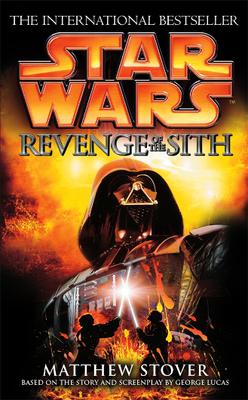
Star Wars: Revenge of the Sith is a novelization of the film of the same name, written by Matthew Stover and published on April 2, 2005, by Del Rey Books.

The Sith are the main antagonists of many works in the fictional universe of the Star Wars franchise. They are the antithesis and ancient enemies of the Jedi. The Sith Order is depicted as an ancient cult of warriors who draw strength from the dark side of the Force and use it to seize power by any means necessary, including terrorism and mass murder; their ultimate goals are to destroy the Jedi and rule the galaxy. The various antagonistic factions in the franchise, namely the Confederacy of Independent Systems, the First Galactic Empire, the Imperial Remnant, and the First Order, all originated with the Sith. Sith, known individually as Sith Lords, are, by nature, ruthless. At any point a single individual assumes absolute authority amongst their kind and is granted the honorific Dark Lord of the Sith. Sith culture is based on perpetual treachery and betrayal. The fate of Sith Lords is, typically, to be murdered and replaced by their own apprentices. Sith teach their apprentices to revere the dark side of the Force, to give full reign to aggressive emotions such as rage and hatred, and to believe that others are expendable in the pursuit of power, it makes the Lords' demise inevitable.

Sheev Palpatine is a fictional character in the Star Wars franchise created by George Lucas. He first appears on screen in The Empire Strikes Back (1980), in which he is credited as The Emperor, and is the overarching antagonist of the three film trilogies in the Skywalker Saga, in which he is portrayed by Ian McDiarmid. The character is also known by his Sith name, Darth Sidious, which was first used in the novelization of The Phantom Menace (1999). In creating Palpatine, Lucas was inspired by real-world examples of democratic backsliding during the rise and rule of dictators such as Julius Caesar, Napoleon Bonaparte, and Adolf Hitler.
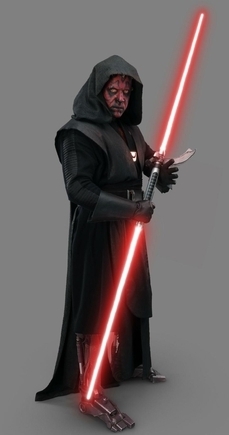
Darth Maul, later known simply as Maul, is a character in the Star Wars franchise. He first appeared in the 1999 film Star Wars: Episode I – The Phantom Menace as a powerful Sith Lord and Darth Sidious' first apprentice. Though seemingly killed by Obi-Wan Kenobi at the end of the film, Darth Maul returned in the 2008 animated series Star Wars: The Clone Wars. Star Wars creator George Lucas had intended for the resurrected Maul to serve as the main antagonist of the sequel film trilogy, but these plans were abandoned when Disney acquired Lucasfilm in 2012. The character nonetheless reappeared in the 2014 animated series Star Wars Rebels and the 2018 film Solo: A Star Wars Story, voiced again by Witwer; Park physically reprised the role in Solo. Since his initial defeat in The Phantom Menace, Maul has become an independent criminal mastermind and endured as Obi-Wan's archenemy.

"Robot Chicken: Star Wars Episode II" is a 2008 episode of the television comedy series Robot Chicken, and the sequel to the Annie Award winning "Robot Chicken: Star Wars", which aired as a one-off special during Cartoon Network's Adult Swim block on November 16, 2008. Like "Robot Chicken: Star Wars", it has been released on its own DVD on July 21, 2009, and will not be part of a season box set. The DVD contains the original broadcast version, and the "Extended Version", which features an additional 15 minutes of footage cut from the broadcast version. It was nominated for a 2009 Primetime Emmy Award for Outstanding Animated Program.

Star Wars Transformers is a Hasbro toy line started in 2006. The line features robot versions of various characters from the Star Wars franchise that transform into vehicles from the same series.

Obi-Wan Kenobi is an American space opera television miniseries produced by Lucasfilm for the streaming service Disney+. It is part of the Star Wars franchise. Set ten years after the Jedi Order was purged during the events of the film Star Wars: Episode III – Revenge of the Sith (2005), the series follows surviving Jedi Master Obi-Wan Kenobi who emerges from hiding to rescue the kidnapped Princess Leia from the Galactic Empire's Inquisitors. This brings Kenobi into conflict with his former apprentice, Darth Vader.

Star Wars: SC 38 – Reimagined is a 2019 fan remake of the 38th scene in Star Wars (1977), in which the characters of Obi-Wan "Ben" Kenobi and Darth Vader engage in a lightsaber duel on the first Death Star. It was directed by Philip Silvera, and stars stuntpeople, Dan Brown and Richard Cetrone, performing in the new footage as Kenobi and Vader respectively. It was uploaded by FXitinPost to YouTube on May 8, 2019.




















